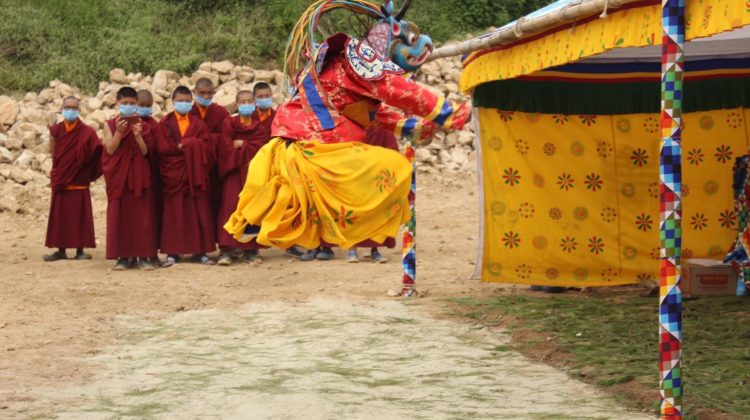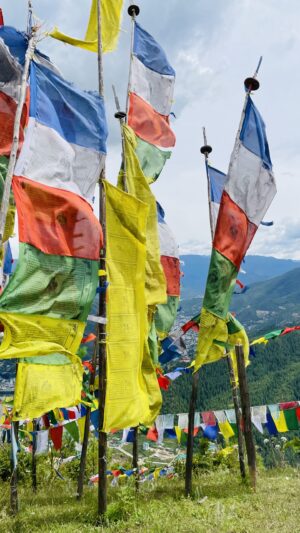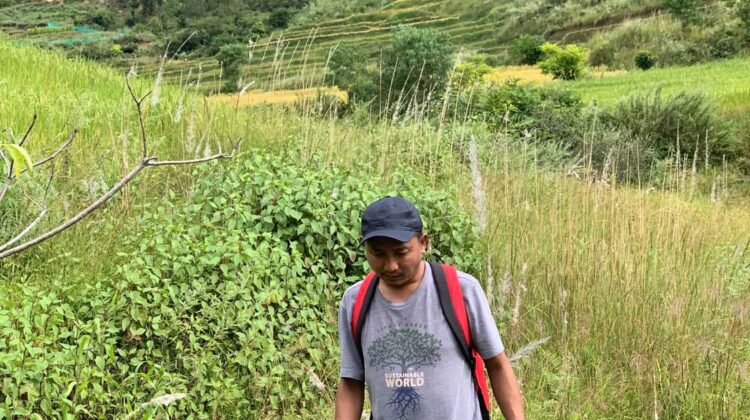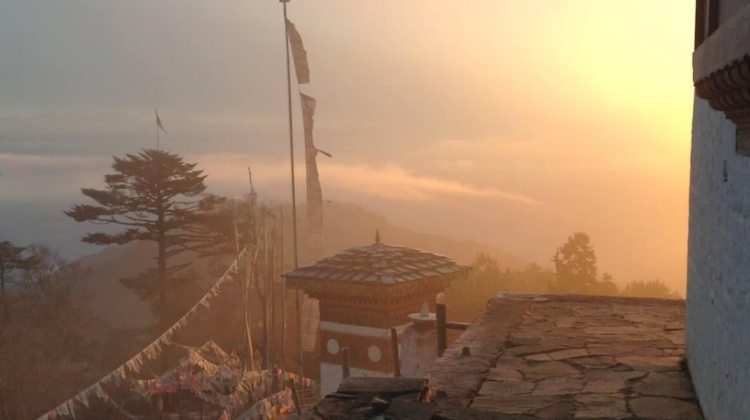Above photo credit: Sonam Phuntsho.
Holidays represent the cultural and spiritual fabric of Bhutan, bringing together a colourful array of family, friends, music, dance, and food. Public holidays, like National Day celebrated December 17, are observed throughout Bhutan, while tshechus, or festivals, are observed in local areas. Holidays cultivate communities and a deeper connection to the world, particularly auspicious holidays like tshechus or Dashain (festival for the Hindu community in Bhutan).
As communities across the world deal with immense challenges to emotional wellbeing, studies have shown that culture and spirituality can positively impact community resilience. Culture builds social cohesion, which can help communities bounce back faster during recovery processes.1 Arts and culture provide opportunities for social engagement, learning, and self-actualization, thus supporting overall resiliency.2 Furthermore, spiritual practices have long been recognized as powerful coping mechanisms to deal with life-changing or traumatic events and as a source for wellbeing.3
Below are stories and photos that show how Bhutanese communities have adapted the celebration of tshechus during COVID-19. More importantly, they signal the immense strength and resiliency that can be built through cultural and spiritual practices. The first story ‘The Thongdrel (tapestry)’ is written by Ugyen Tshering and shares an elder’s experience during the Paro Tshechu this year. The second story ‘Tshechu and celebrating the opening of a monastery’ is a photo story with images taken by Sonam Phuntsho, with permission to share from Pelri Pema Choling Monastery. BCF has been given permission to share these stories and pictures, and would like to thank the contributors for sharing an uplifting message.
The Thongdrel (tapestry) by Ugyen Tshering
Ap Gyeltshen lives nearby Paro Rinpung Dzong. He is almost eighty years old and never had he missed Paro Tshechu in his life.
As the spring came, flowers blossomed, the winter cold faded, the sound of Paro Tshechu preparation always brought the same excitement he had as a child.
This year he understood that he wasn’t even allowed to take that 100 m walk, climb the steps to the Dzong and attend one of his favorites tshechu ‘Nangcham’ often referred to as elder people’s Tshechu.
The rest of other four days Tshechu would be, as traditionally occurs, out in the open just above the Dzong at Dhe-ya-kha.
The last day of the Tshechu wraps up with the unfolding of Guru Rinpoche thongdrel revered by all the people both locals and visitors.
Alas! There wasn’t going to be an unfolding of the Guru Thongdrel this year to avoid massive crowd that the event would gather.

Ap Gyeltshen got up early on ‘tsay chay nga’, (15th date of second month), dressed in a light clean gho, slipped into his tshoglam (traditional ceremonial shoes), picked his white scarf (lam nay) and visited Dhe-ya-kha and stared at the building that would be otherwise hidden behind the gigantic Guru Thongdrel (tapestry) on this day.
He shut his eyes, let his minds eye imagine the Guru Thongdrel he had viewed and prayed since as a child. He had the entire ground to himself, he prostrated 3 times and prayed blissfully for the people, country and the King. It was so peaceful and time stood still.
When he returned home for breakfast, his grandchildren wanted to know where he had been?
He smiled and said, “Being one of the eldest around here, I felt the need to pay respect and pray to the Thongdrel which had always been there on this day, COVID or no COVID.”

Tshechu and celebrating the opening of a monastery
Below are images from the Treldo Tshechu in Chubjakha, Paro. On the last day of Trelda Tshechu (June 30th, 2020), the Pelri Pema Choling Monastery had the honour of a visit from H.H Shechen Rabjam Rinpoche for a groundbreaking ceremony on the construction of a new monastery. Photos are taken by Sonam Phuntsho, the cameraman of the monastery, with permission from Pelri Pema Choling Monastery.



References
1 Wahba, Sameh, et al. “Culture in the COVID-19 recovery: Good for your wallet, good for resilience, and good for you.” World Bank Blog. 20 August 2020. https://blogs.worldbank.org/sustainablecities/culture-covid-19-recovery-good-your-wallet-good-resilience-and-good-you.
2 Wahba, Sameh.
3 Roman NV, Mthembu TG, Hoosen M. “Spiritual care – ‘A deeper immunity’ – A response to Covid-19 pandemic.” Afr J Prm Health Care Fam Med. 2020;12(1), a2456. https://doi.org/ 10.4102/phcfm.v12i1.245.







